
Canna is an island in the Inner Hebrides. Have a look at the pictures on Cannablog on the BBC's Island Blogging project.
John Lorne Campbell, and his wife of many years, Margaret Faye Shaw, bought the island in 1938. In the twenties, Margaret came across from the USA on a cycling holiday through the island of South Uist, 30 miles to the west across the Sea of the Hebrides. She fell in love with the place and stayed on. When she met her husband to be John, they went on to establish a huge library of Gaelic literature and music, which is still in Canna House.
John Lorne Campbell died in 1996 in Italy. He was buried there, but as is customary in Italy, after 10 years his coffin would be transferred to a communal grave. This was not deemed appropriate by the National Trust for Scotland, who were gifted the island of Canna alongside with the library on JLC's death. They arranged for his remains to be transferred back to Canna yesterday, June 21st. Unfortunately, a summer gale prevented the ferry from sailing.
Margaret Faye Shaw lived to be 101, and she carried on living at Canna House until her death in 2004. She was buried in South Uist, amongst the people she had come to love.
As you can read from the entries in Cannablog, things in the Small Isles are always a bit quirky. In October last year, something happened that can only happen there - read on.
(from the Arnish Lighthouse blog)
The Isle of Canna has been suffering from an infestation of rats. Nobody likes them, and apart from being an outright nuisance, they are a threat to ground nesting birds in the island. Unfortunately, the National Trust for Scotland, who are looking after Canna, could not just dose the island with warfarin (rat poison). Because Canna is home to a unique species of mouse, which is slightly larger than your average mouse.
 Last autumn, a team from Edinburgh University spent some time on the
island setting traps to capture the mice live and take them to
Edinburgh for safekeeping. Whilst the mice were away, it wasn't the
cats that were dancing, and certainly not the rats. They were going to
be treated to a dose of poison. So, the dapper ship MV Spanish John II was
chartered to transport canisters of rat poison to Canna, one day in
October this year. As she was chugging round the Isle of Rum, a call
came on the VHF radio. An American warship, on manoeuvres in the area,
was warning a vessel on its portside to move away, as it was in its
safety zone. The skipper of the Spanish John didn't take
notice, because he was on the starboard side of the American vessel.
However, he was the only one there. The warnings were repeated six
times, with increasing urgency. The master of the Spanish John now
began to panic, and he tried shouting at the USS Klakring, to
no avail. Another message came through on the VHF, ordering the black
vessel with the white superstructure to pull away. The Spanish John hasn't
got a white superstructure, but the white drums with poison could be
misinterpreted as such. Then another four verbal warnings came to the Spanish John to pull away, or else the Klakring
would open fire. The skipper did pull away, but not sufficiently. Four
loud bangs, followed by four red glowing dots moving at speed from the Klakring would indicate that four rounds had been fired. The Spanish John
was not hit, and a Navy spokesman insisted that the American vessel was
not authorised to fire live weapons. The manoeuvres had been widely
broadcast and advertised, but may not have got through to the crew of
the Spanish John. The latter vessel continued on its innocent passage to Canna, where the rats are currently being exterminated.
Last autumn, a team from Edinburgh University spent some time on the
island setting traps to capture the mice live and take them to
Edinburgh for safekeeping. Whilst the mice were away, it wasn't the
cats that were dancing, and certainly not the rats. They were going to
be treated to a dose of poison. So, the dapper ship MV Spanish John II was
chartered to transport canisters of rat poison to Canna, one day in
October this year. As she was chugging round the Isle of Rum, a call
came on the VHF radio. An American warship, on manoeuvres in the area,
was warning a vessel on its portside to move away, as it was in its
safety zone. The skipper of the Spanish John didn't take
notice, because he was on the starboard side of the American vessel.
However, he was the only one there. The warnings were repeated six
times, with increasing urgency. The master of the Spanish John now
began to panic, and he tried shouting at the USS Klakring, to
no avail. Another message came through on the VHF, ordering the black
vessel with the white superstructure to pull away. The Spanish John hasn't
got a white superstructure, but the white drums with poison could be
misinterpreted as such. Then another four verbal warnings came to the Spanish John to pull away, or else the Klakring
would open fire. The skipper did pull away, but not sufficiently. Four
loud bangs, followed by four red glowing dots moving at speed from the Klakring would indicate that four rounds had been fired. The Spanish John
was not hit, and a Navy spokesman insisted that the American vessel was
not authorised to fire live weapons. The manoeuvres had been widely
broadcast and advertised, but may not have got through to the crew of
the Spanish John. The latter vessel continued on its innocent passage to Canna, where the rats are currently being exterminated.
As soon as they're all gone, the mice will be returned. Let's hope there are no more manoeuvres in the Sea of the Hebrides for a little while.
Further information on the vessels involved (thanks to Sunday Mail):
THE Spanish John II was built in 2003 by Nobles of Girvan.
The ship - powered by twin 230hp Daewoo engines - is 18metres long by 6.5metres wide and carries a deck cargo of 40 tons. Its main use is as a cargo vessel and it transports vehicles, plants and livestock which are essential supplies in the Inner Hebrides and Knoydart. Fuel cargo is a speciality of the boat, which can carry 26,000 litres of diesel in tanks below deck. One of the strangest tasks the crew has undertaken was transporting an alligator to the isle of Rhum
USS Klakring is a guided missile frigate which escorts and protects carrier battle groups, amphibious landing groups and convoys. The 4100-tonne ship was commissioned in August 20, 1983, and built in Maine. It is 138 metres long and can travel at up to 28 knots and is capable of carrying two Sea Hawk aircraft. It is also fitted with two triple mount torpedo tubes and a rapid firing gun. It would normally house a crew of around 215 men. It is named after war hero Admiral Thomas B Klakring, who sunk eight Japanese ships during the Pacific war. He was awarded the Navy Cross with two gold stars




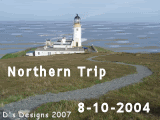

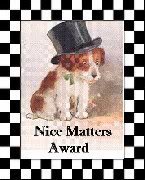

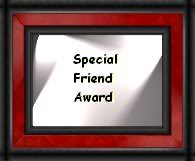

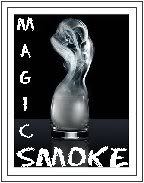
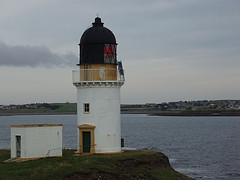
I hope they finally got rid of the rats without any more 'help' from the US navy! Jeannette xx
ReplyDeleteThe rats were successfully exterminated. They are leaving chocolate sticks out to watch for tell-tale toothmarks. Chocoholics beware...
ReplyDeleteWhat a great entry ,Thanks for the information on John Lorne Campbell and his wife ,and the rat/mouse story ,hope the former have all gone so the latter can return ..........Jan xx
ReplyDeleteThis whole incident could have been avoided had they simply had a good ole' fashioned rat killing. It's really quite exciting! ;o) -- Barbara
ReplyDeleteDear Pharmolo,
ReplyDeleteDag! wat hebben zij voor boeken daar in het bibliotheque? Echt oude boeken over Schotsland en Ireland?
liefs van natalie
Your entries are always so informative. I really felt sorry for Campbell's bones being transferred back and forth like that ~ what a pity.
ReplyDeleteI've always thought the best remedy for rats were cats. That's why the Egyptians worshipped them, you know.
Hello? Did someone say chocolate? Yummy! LOL
Dianna